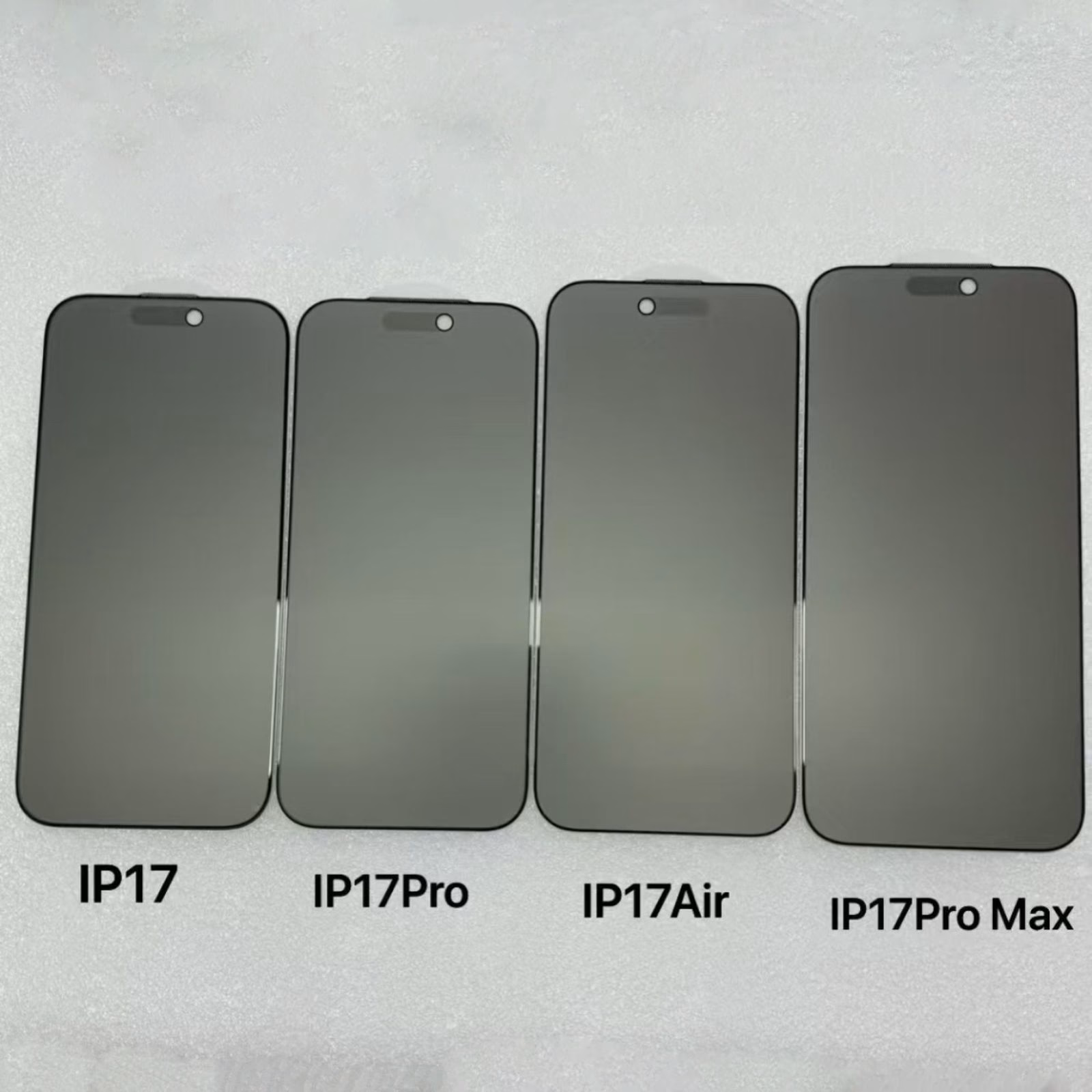The iPhone 17 Air's Alleged Design Shift: What a Screen Protector Leak Tells Us
It's always a fascinating dance, isn't it? The one between Apple's legendary secrecy and the relentless tide of leaks that precede every major product launch. For those of us who follow the tech world closely, these early glimpses are like breadcrumbs leading to the main course. And right now, the latest morsel comes in the form of an alleged screen protector for Apple's rumored ultra-thin iPhone 17 Air, hinting at a pretty significant design tweak.
You know how it is with Apple rumors; sometimes they're just whispers in the wind, but other times, they're backed by physical evidence. This screen protector, reportedly designed for the much-anticipated iPhone 17 Air, falls into the latter category. It suggests a potential design difference that could genuinely shake things up: the front camera might be moving to the left of the Dynamic Island. That's a big deal.
The Curious Case of the Left-Shifted Camera
For years now, we've grown accustomed to the front-facing camera being nestled neatly within or to the right of the Dynamic Island (or the notch, before that). It's a familiar layout, one our muscle memory has adapted to for selfies, Face ID, and video calls. But this new leak, corroborated by multiple reputable sources, suggests a radical redesign. The camera hole, it seems, will be flipped to the opposite side.
Why would Apple do this? It's the million-dollar question, isn't it? My initial thought goes straight to the rumored ultra-thin profile of the iPhone 17 Air. We've heard whispers that this model could be Apple's thinnest iPhone yet, possibly even as slender as 5.5mm. When you're shaving millimeters off a device, every internal component's placement becomes a high-stakes game of Tetris. Shifting the camera could be a strategic move to optimize internal space, perhaps to accommodate a larger battery, a new haptic engine, or even a more advanced cooling system in such a svelte chassis.
User Experience and Dynamic Island Interaction
A change like this isn't just about aesthetics or internal engineering; it has direct implications for the user experience. Think about it:
- Selfies and Video Calls: Will the new placement feel natural? Or will it require users to adjust their grip or gaze slightly? Our brains are wired for consistency, and even a small shift can feel awkward initially.
- Face ID: While Face ID is largely invisible in its operation, the camera's new position might subtly alter the optimal angle for facial recognition. I doubt it'll be a major issue, Apple's pretty good about these things, but it's worth considering.
- Dynamic Island Integration: The Dynamic Island has become a central hub for alerts, live activities, and background tasks. How will the camera's new position interact with the animations and information displayed there? Could this lead to new software features that leverage the camera's left-side placement? Perhaps new gestures or interactive elements that flow differently around the camera. It's an exciting prospect, if you ask me.
The Accessory Market's Early Readiness
One of the most compelling aspects of these screen protector leaks is what they tell us about the broader industry. Accessory manufacturers don't just conjure these designs out of thin air. They often receive early schematics or dimensions from sources within the supply chain to get a head start on production. The fact that screen protectors for the iPhone 17 Air are already surfacing with this distinct camera cutout suggests that the design is likely quite far along in its development.
It also highlights the intense competition in the accessory market. Imagine being a screen protector company and getting it wrong. You'd be stuck with thousands, maybe millions, of useless products. So, they're typically very careful and rely on highly credible information. This early readiness from accessory makers lends significant weight to the authenticity of the leak. It just goes to show, the accessory makers are always a step ahead, or at least trying to be.
Balancing Thinness with Practicality
While the allure of an ultra-thin iPhone 17 Air is undeniable, it does raise some familiar questions. Historically, thinner devices have sometimes come with trade-offs. Durability, for instance. A thinner frame might be more susceptible to bending or damage from drops. And what about battery life? Squeezing components into a smaller space often means less room for a substantial battery, which could impact daily usage.
Apple has been incredibly innovative in overcoming these challenges in the past, but it's a constant balancing act. This potential camera shift could be a crucial piece of that puzzle, allowing them to achieve their thinness goals without compromising too much on other vital aspects. It's a nuanced challenge, and I'm keen to see how they've tackled it.
What to Watch For Next
This screen protector leak is more than just a tidbit; it's a strong indicator of Apple's direction for the iPhone 17 Air. It suggests a genuine commitment to pushing the boundaries of industrial design, even if it means re-thinking established layouts. As we move closer to the rumored launch, we'll undoubtedly see more leaks – perhaps renders, case designs, or even component photos – that will further corroborate or refine what this screen protector has revealed.
For now, the idea of an ultra-thin iPhone 17 Air with a left-shifted front camera is certainly intriguing. It sets the stage for what could be one of Apple's most radical iPhone redesigns in years. Only time will tell if this alleged design shift is a stroke of genius or a minor inconvenience, but one thing's for sure: the anticipation is building.
